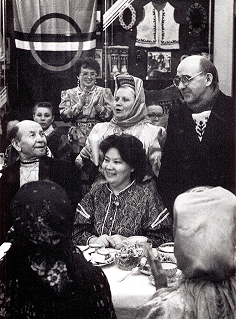The Sami of the Kola Peninsula - About the life of an ethnic minority in the Soviet Union
DOI:
https://doi.org/10.7557/10.2546Emneord (Nøkkelord):
Sami Oral History, Kola peninsula, Soviet Union/USSR, resettlements, ethnic minoritySammendrag
With this study of the Sami population in the Russian part of Lapland, Lukas Allemann closes a research gap. The author focuses on the little explored period between the end of the war in 1945 and beginning of perestroika. Applying an oral history approach with biographical interviews the author opens up the inner world and structural relationships of this minority ethnic group.
For all the differences, contradictions and diverging assessments of the Soviet era, what emerges from this study is that - contrary to the widespread view expressed in the secondary literature - it was not collectivization and terror, but the forced relocations between the 1930s and 70s that represented the deepest rupture in the life of the Sami. The opinion that it was Soviet rule that initiated the destruction of Sami culture is also relativized. Russification and changes in reindeer herding patterns had set in already before the October Revolution.
Translated from German language by Michael Lomax.
Originally published (in German) by:
Verlag Peter Lang, 'Menschen und Strukturen' series. Historisch-sozialwissenschaftliche Studien, Ed. Heiko Haumann, Vol. 18, Frankfurt am Main, Berlin, Bern, Brussels, New York, Oxford, Vienna, 2010.





